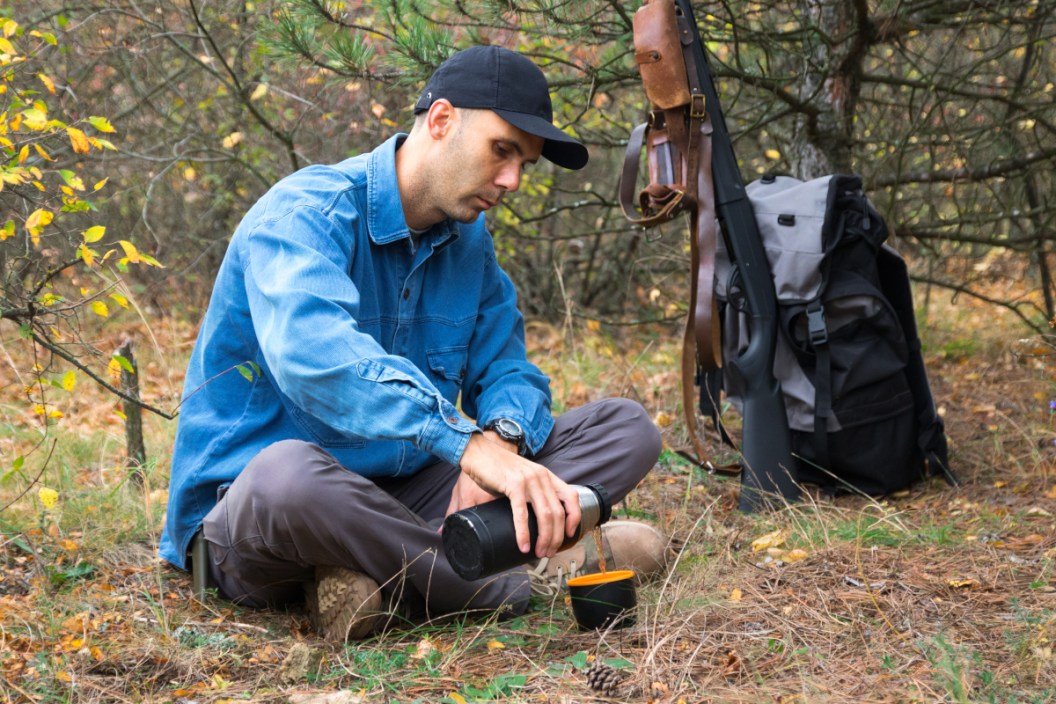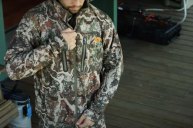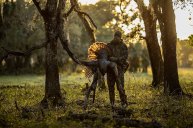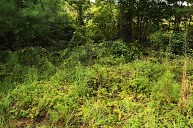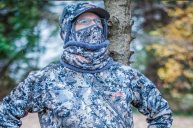If you have ever cracked open one of those books that relays hunting camp stories from times past, you may have noticed a lot of red checkered hunting jackets in those vintage photos. Is that because the hunters back then were so cool they could show up in anything and still harvest big numbers of wild game? Probably not.
It is thought that deer see colors on a spectrum with red shades being on the least sensitive end of the spectrum to their eyes and shades like blue and violet on the other end. Even more important than the colors on your hunting clothing is that it breaks up the large outline of your body. Deer perceive the outline and recognize that a human is not a natural part of that environment.
The flannel those old hunters were wearing met the criteria to conceal their bodies from a deer's sight just right. Camouflage does this too, but is it necessary? Let's investigate. Camouflage can help a hunt but is not the be-all end-all. Here's a drilldown of what I've discovered about hunting without camo.
At age 42, I have traveled through woods, fields, and swamps for almost that long. During that time, I have worn battered camouflage fatigues, olive drab, high-tech camo patterns and square-patterned flannel shirts and wool coats. Some hunters have even gotten away with wearing blue jeans (although not idea—more on that later). These are the three factors that should be taken into consideration no matter what hunting clothes you wear:
Movement
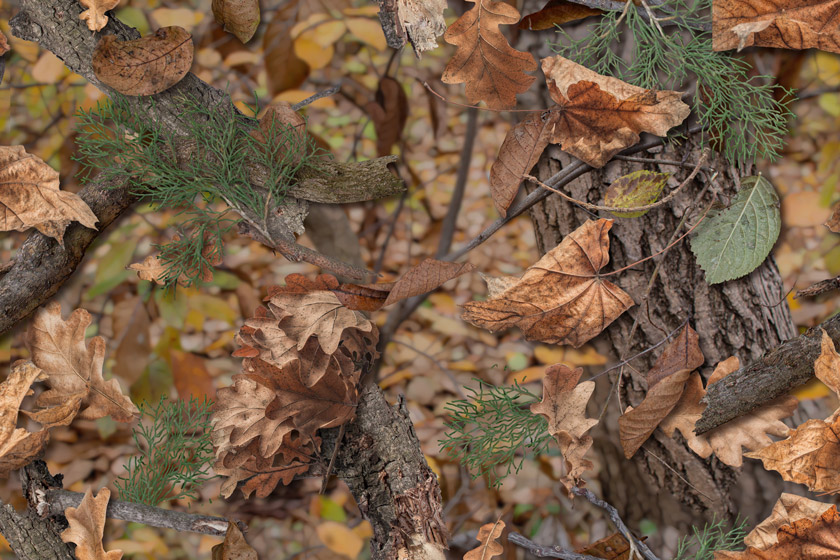
Getty: Fobosvobos
Animals fear movement, especially unpredictable movement from an unknown source. Movement could be a quick pounce from a predator. Even the slightest movement could spell disaster for them. Nature has hardwired them to fear movement. Sitting still will keep this problem to a minimum. You can correct for animals' movement sensitivity by sitting really still, and possibly using a hunting blind or treestand to hide yourself better. Every little bit helps.
Silhouettes
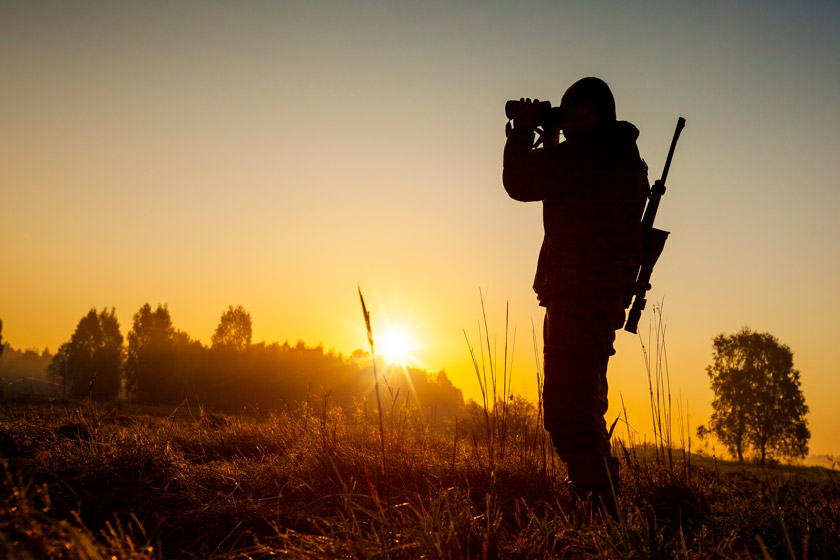
Getty: Avalon_Studio
Game animals are especially fearful of the human silhouette. The shape of a human chest and head outlined against vegetation is a quick way to get noticed. Silhouettes require matching the patterns you wear the best to your surroundings. Try not to wear clothes that reflect light or have a slight glare to the fabric. If you are wearing light-colored clothes in a dark environment or vice versa you will get noticed quickly.
Bare Skin
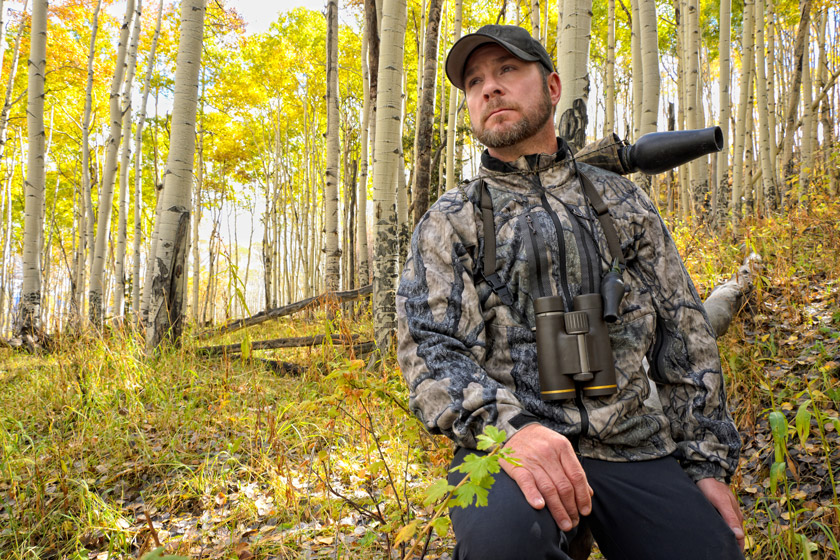
Getty: Adventure_Photo
Baring your naked face is like waving a flag and signaling you're out there. Prey animals, such as deer, are hardwired to avoid faces like ours. Consider it in terms of predators and prey: many predators have faces with near-set in the front of the head. Think wolves, bears, coyotes, etc. Many prey animals have wide-set eyes on the sides of their heads, like deer do, to help them see a wider view around them and potentially protect them from predators. When deer hone in on a human face, to them it looks like an unidentified predator. The human face can be covered by a face mask, head net or by camouflage makeup. Make sure you use one or the other as a full set of camo clothing is generally worthless without covering your face. This is especially important for bowhunters.
Bare skin from hands or other body parts is no good either. If deer notice it but can't identify it they will get scared and leave.
Hiking in cold weather while wearing the all-light-brown Carhartt arctic-lined clothing has been an interesting experiment. On a few separate occasions, while clad in light brown winter clothes with my face covered by a balaclava and wearing sunglasses, I had strange interactions with wild turkeys. They appeared to be very curious about me and actually circled around me. One gobbler walked all the way around me from just feet away when I walked up on him and his flock. This Tom then wandered off in no hurry with his flock. A big hen also was quite curious on one occasion while wearing the same outfit.
As long as I wore this outfit, the wild turkeys were unafraid. When I switched over to hunting camo of any make, they ran in fear. The only thing I can surmise is that turkeys are used to seeing deer. While dressed in my heavy clothes, I may have looked like a two-legged deer? Strange as it may sound, it might be the only explanation, as these were really wild birds. They certainly knew camouflage meant hunters and danger.
So, camouflage is a danger sign to animals? No, not exactly. If they see a shape that is moving and they cannot identify it, they fear it. In the above instance, they thought they knew what I was but were way off. Curiosity also played a big role. In terms of camouflage, we must remember that animals don't see the world as we do.
This is because of the visible spectrum variations between species. They may not be completely color blind, but some colors on hunting clothing stick out like a sore thumb to an animal like a whitetail deer. On the flip side, some colors that stick out to us, like blaze orange, are nearly invisible to many critters.
A pretty pattern of leaves and sticks like Realtree or Mossy Oak that blends in well to human eyes might work the opposite for animals.
In order to stay invisible to animals, the material must be quiet and soft to avoid noise against brush. Also the material must not have any reflective shine qualities such as U.V. dyes. The pattern must at all cost break up your outline. You want the game to look through you, not at you. Especially if you're archery hunting.
Checkered patterned flannels and wool coats have worked great for hunters in the past. They still work great in traditional bowhunting along with any wildlife viewing or hunting activity. They are soft, soundless and the patterns break up your outline.
Solid colors and earth tones like olive drab, brown or grey can be tricky. the shades must match the background. If they do not you will appear as the dreaded human silhouette. Brown and gray colors are good for snow less winter landscapes and light greens for summer. Yes, white is good when lots of snow is on the ground.
So, can you hunt without camouflage this hunting season? The answer is a resounding yes. Stay away from the color blue, as it seems to be especially visible to deer. Keep your human outline to a minimum. Don't move at all. Full camouflage patterns will probably give you an edge, but in my experience it's not the last word in hunting wild game.
Do you like articles about the outdoors? Click here to view more articles by Eric Nestor. You can follow him @ericthewoodsman on Twitter, The Classic Woodsman on Facebook, and @theclassicwoodsman on Instagram. You can view more Nestor Photography photos at Nestor Photography.
READ MORE: ARCHERY REVIEW: HICKORY CREEK MINI IN-LINE VERTICAL BOW
